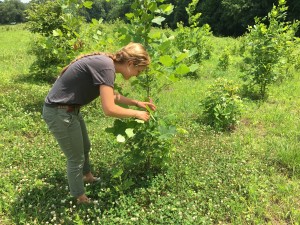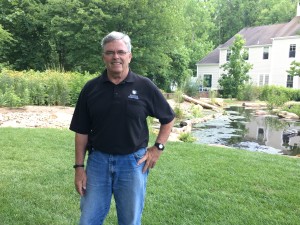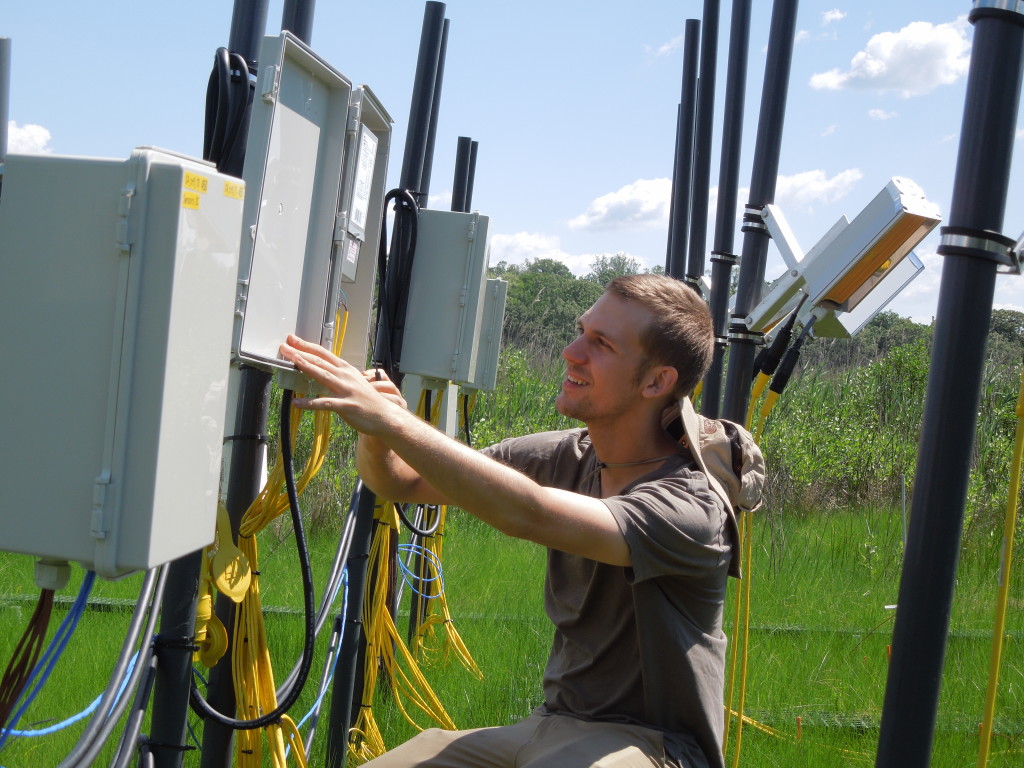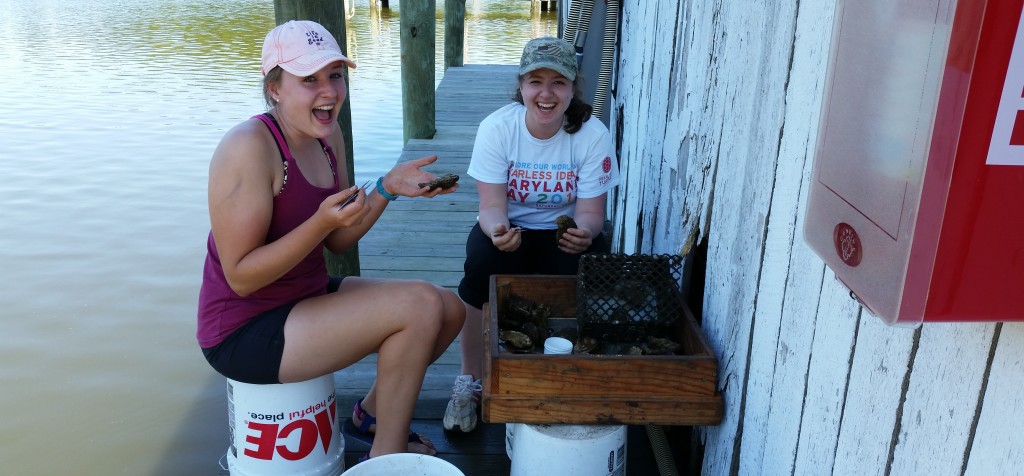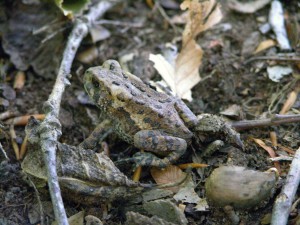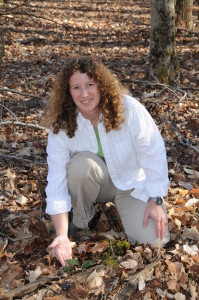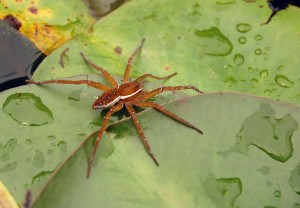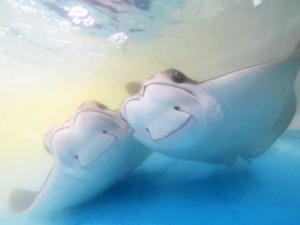by Kristen Minogue
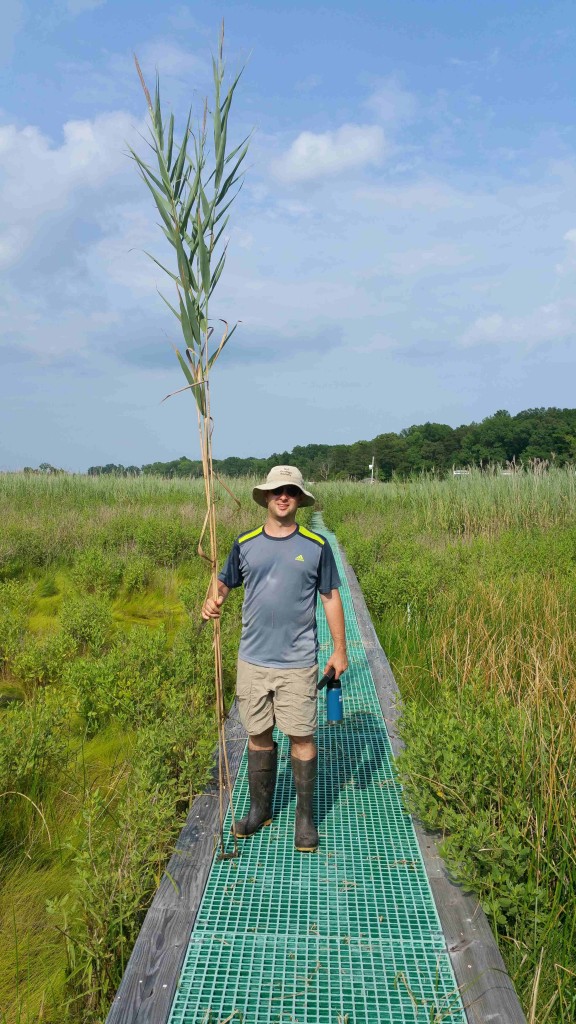
Ecologist and lead author Josh Caplan holds a Phragmites plant at the Global Change Research Marsh. Invasive Phragmites can grow up to 15 feet tall. (Thomas Mozdzer)
One of the Chesapeake’s least favorite invaders could end up being an unlikely savior. The invasive reed Phragmites australis, a plant that has exploded across Chesapeake wetlands in the last few decades, is also making those wetlands better at soaking up carbon, ecologists from the Smithsonian Environmental Research Center (SERC) and Bryn Mawr College discovered in a new study.
The common reed, better known as Phragmites australis, grows in dense clusters up to 15 feet tall. North America has several native strains that have co-existed peacefully with many other native plants for at least 30,000 years. It is the invasive strain that arrived from Eurasia in the 1800s that has scientists and environmental managers worried. Eurasian Phragmites grows taller and denser than North American Phragmites, crowding out many smaller plants, and blocking access to light and nutrients. These changes in plant community have a ripple effect on animals that rely on wetlands for habitat.
“The fish communities, the insect communities, the soil and invertebrate communities, all these things change when Phragmites comes in,” says lead author Josh Caplan, a Bryn Mawr postdoc and visiting scientist at SERC. Often, those changes aren’t for the better. “Phragmites is doing a number to these ecosystems.” Click to continue »
